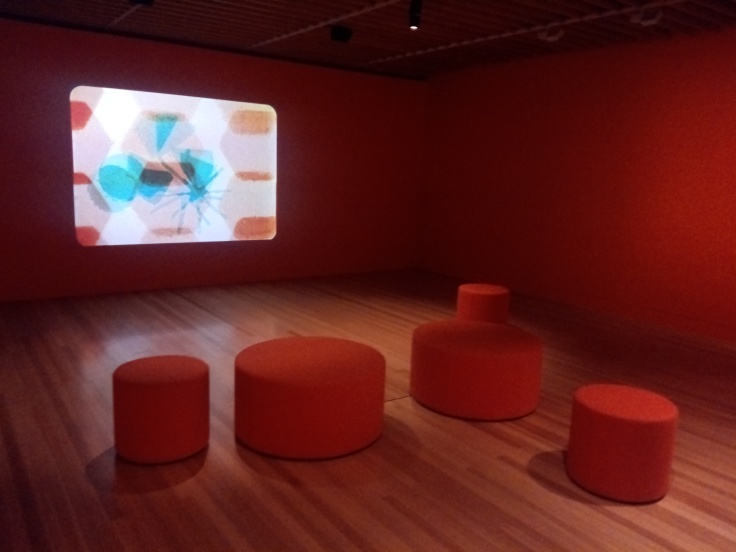I was fortunate this week to have some time travelling in the South Island (including a rare visit to Dunedin to launch Tao Wells’ new publication EASIER). Having a few hours free between connecting flights in Wellington I was able to get my first look at Te Papa’s new Toi Art exhibitions.
My professional interest in the new exhibitions comes with the inclusion of Len Lye, represented by four of his experimental films, one of which Kaleidoscope (1935) lends the title of one of the key permanent exhibitions, Kaleidoscope: Abstract Aotearoa.

Te Papa has a great painting by Lye in their collection (one of the best), however, most know Lye through his kinetic sculpture and experimental cinema so these films give Lye a fairly prominent place in the new Te Papa project. One of the great aspects of Te Papa’s display of Lye’s work here is what they have included with Tusalava (1929).
Lye’s first film, Tusalava generally screens without a soundtrack. The premiere screening at the London Film Society in December 1929 included a live, two-piano accompaniment composed by the Australian Jack Ellitt. The score was torn up by the temperamental Ellitt and, since it was never recorded, the film has remained silent except for an occasional use of Eugene Goossens’ Rhythmic dance for two pianos, op. 30 (said by Lye to be similar to Ellitt’s original piece). What this means is that Tusalava is often treated to new soundtracks by contemporary composers, such as Alcyona Mick and Harry Harrison. Te Papa is exhibiting Tusalava in its silent form along with three optional alternative soundtracks produced by Matatumua Opeloge Ah Sam, Poulima Salima and Matthew Faiumu Salapu (aka Anonymouz).
These three soundtracks were composed in 2013 as part of the exhibition Len Lye: Agiagiā produced by the Govett-Brewster Art Gallery and Mangere Art Centre (curated by James Pinker and myself). Roger Horrocks reviewed the exhibition in Art NZ #149 (From the Fringe to the Centre: Len Lye at Mangere Arts Centre) and Ema Tavola commented with disdain here. You can buy a copy of the catalogue here.
The new soundtracks featured as part of a public programme where three local (South Auckland) contemporary composers were invited to produce alternative soundtracks to the film, adding a new element to the Pacific character of Tusalava. Kelly Carmichael reviewed this event, noting
‘As public programmes go, New Compositions: Three Composers Respond to Tusalava was one of the most ambitious and successful examples of how cultural organisations can operate in an expanded field of practice.’
The soundtrack project within Len Lye: Agiagiā was driven by James Pinker. He and the three composers should be congratulated that the project lives on beyond a single public programme and now sits inside our national museum at a moment of celebration.
Te Papa has also included a further soundtrack option with Tusalava, an audio description for the visually impaired. This came about from an initiative at the Govett-Brewster Art Gallery as part of our Len Lye programme and lead by Sarah Dalle Nogare. Tusalava was selected for a pilot project to see how audio descriptions for the visually impaired would work on pieces of experimental cinema. It seemed the narrative structure of the film would make this the most productive example to work with. Working with our partners at Ngā Taonga: Sound and Vision and Able we produced the descriptive soundtrack and then ran an audience workshop in New Plymouth to get feedback. The exhibition On an Island was the first opportunity to present Tusalava with this new audio and it seemed to integrate well into the exhibition. Hopefully, at Te Papa, many more visitors will make the most of this particular soundtrack. Meanwhile, we’ll be working on audio descriptions for further and the more challenging of Lye’s abstract films.



Leave a comment